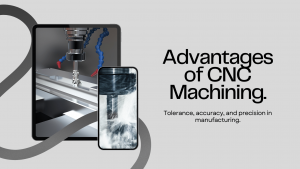Tolleranza, precisione, e la precisione sono tre concetti fondamentali per quanto riguarda la progettazione del prodotto, E tutti contribuiscono alla funzionalità e alla qualità di un prodotto. La tolleranza è la massima variazione consentita nelle dimensioni o nelle specifiche di un prodotto, Mentre l'accuratezza è se le misurazioni effettive corrispondono ai valori mirati. Tuttavia, l'altro termine, precisione, è costituito dal grado di coerenza e riproducibilità nel raggiungere misurazioni esatte.
Queste sono le idee che sono interconnesse e che hanno un'influenza significativa sul prodotto finale. La tolleranza di un prodotto implica la gamma di variazioni, che è consentito, L'accuratezza garantisce che il prodotto soddisfi le specifiche impostate, e la precisione garantisce che il prodotto possa essere riprodotto in modo uniforme. Afferrando e differenziando questi principi giustamente, I designer saranno in grado di realizzare prodotti che non solo soddisferanno i loro clienti, ma soddisfino anche gli standard del settore.
Comprendere le differenze tra tolleranza, Precisione, e precisione
Tolleranza, precisione, e la precisione sono già usate in modo intercambiabile; Tuttavia, Hanno significati diversi nella progettazione del prodotto. La tolleranza è le parti delle dimensioni o delle specifiche che possono variare. Ad esempio, Se le specifiche del prodotto richiedono una tolleranza di ± 0,1 mm per una certa dimensione, Implica che la dimensione reale può trovarsi all'interno di questo intervallo senza causare problemi funzionali per il prodotto.
La precisione si riferisce alla capacità di ottenere i valori effettivi piuttosto che quelli previsti. È un modo per accertare se un prodotto soddisfa il suo design previsto o meno. Come esempio, un prodotto con una lunghezza di 100 mm che misura 99.9 MM può essere considerato molto accurato.
Al contrario di quello, La precisione è il livello di ripetibilità e affidabilità dei risultati quando si misura alcuni parametri. È la capacità di produrre un prodotto allo stesso modo con gli stessi risultati esatti. Un prodotto con grande precisione avrà una probabilità molto bassa di qualsiasi variazione nelle sue misurazioni quando viene prodotto ripetutamente.

Importanza della tolleranza, Precisione, e precisione nella progettazione del prodotto
Tolleranza, precisione, e la precisione ha un significato indiscutibile nella progettazione di un buon prodotto per il quale dipende le prestazioni. Con la tolleranza, Il prodotto può soddisfare il requisito delle specifiche generali anche se ci sono piccole variazioni nelle dimensioni. Crea la capacità di seguire il processo di produzione in qualche modo mentre il bersaglio di funzionalità complessivo è ancora raggiunto.
La precisione è un aspetto critico che aiuta a soddisfare le esigenze dei clienti e i requisiti del settore. Un guadagno preciso nella misurazione funzionerà come previsto, e soddisferà gli standard desiderati. Questo diventa ancora più un problema quando si considerano industrie come l'aerospaziale, settore automobilistico, e medicina, Dove la sicurezza e le prestazioni diventano questioni vitali di precisione e precisione.
La precisione è fondamentale per garantire che non ci saranno variazioni nella produzione e, che il processo sarà ripetibile. La produzione di un prodotto molto preciso insieme a una gamma più ampia di opzioni di duplicazione consente alla qualità di essere più costante e la soddisfazione dei clienti di crescere. A causa di questo moderno fenomeno tecnologico, Il ruolo e le funzioni tradizionali degli esperti di marketing, agenzie pubblicitarie, E anche i politici vengono interrotti. Gli esperti di marketing e i governi ora possono condividere le proprie opinioni e informazioni direttamente con i consumatori attraverso i social media, Aumentando la loro influenza sul sistema politico. Aiuta contemporaneamente a ridurre i rifiuti e raggiungere l'efficienza nella produzione. Dagli studenti ai metodi di insegnamento, La tecnologia ha avuto un impatto indelebile sull'istruzione.
Tecniche per raggiungere la tolleranza, Precisione, e precisione nella progettazione del prodotto
Una sfida cruciale per il produttore come area è l'incorporazione di varie tecniche e metodologie, che garantirà la tolleranza, precisione, e precisione. Tra le tecniche preferite c'è il controllo del processo statistico (Spc), il che significa monitorare e controllare i processi di produzione al fine di assicurarsi che si atterranno ai confini considerati accettabili. SPC utilizza strumenti statistici per isolare le variazioni e apportare correzioni applicabili per garantire che l'accuratezza e la precisione rimangano senza compromessi.
Il prossimo approccio è l'uso di Software CAD, che ha la capacità di creare modelli digitali come desiderato come designer utilizza il software. Attraverso l'uso del software CAD, I progettisti possono fornire correttamente le tolleranze documentate con precisione, Quale, alla fine, garantisce che il prodotto finale sia conforme alle specifiche definite.
Per esempio, In settori come Automotive e Aviation, Vengono applicati CMM e altre tecnologie di misurazione avanzate per raggiungere i livelli necessari di accuratezza e precisione. Tali macchine hanno una sonda in grado di misurare la dimensione del prodotto ad alta precisione e il processo di controllo della qualità.
Tecnologia, in primo luogo, ha davvero rivoluzionato le possibilità di progettazione del prodotto; raggiungere la tolleranza, precisione, e la precisione è diventata realtà ora. Moderni processi di produzione, Materiali, e le tecnologie di misurazione ci hanno aiutato a sviluppare prodotti ingegneristici con controlli più stretti, La precisione è più alta, e la precisione è fantastica.
Sfide comuni nel raggiungimento della tolleranza, Precisione, e precisione nella progettazione del prodotto
Gli ingegneri a volte possono affrontare problemi nel raggiungimento della tolleranza, precisione, e precisione nella progettazione di prodotti. Le carenze dei processi di produzione sono gli ostacoli che si incontrano più frequentemente. Con alcune tecniche di sviluppo del prodotto, Alcune operazioni di produzione potrebbero non essere in grado di produrre tolleranze o precisione richieste esatte a causa delle limitazioni inerenti ai metodi. Il processo di progettazione deve essere attentamente studiato dai designer, E dovrebbero scegliere gli approcci più appropriati per superare gli ostacoli a causa del processo di produzione.
La scelta di materiali adeguati è un altro ostacolo. Ogni singolo materiale ha caratteristiche e proprietà specifiche che influenzeranno il livello di tolleranza, precisione, e precisione. I progettisti sono sotto il vincolo di essere costituiti da materiali in grado di fornire le specifiche desiderate in modo da considerare l'espansione termica, stabilità dimensionale, e resistenza al materiale.
Vantaggi dell'incorporazione della tolleranza, Precisione, e precisione nella progettazione del prodotto
Compresa la tolleranza, precisione, e l'esattezza nella progettazione del prodotto offre molti vantaggi. Primo, Aiuta a garantire che il prodotto soddisfi le aspettative dei clienti e gli standard industriali. Un prodotto che si trova all'interno della tolleranza specificata ha misurazioni accurate, e la riproduzione è precisa fornirà le prestazioni richieste e le esigenze del cliente.
Gli esperti in queste aree sono incoraggiati a richiedere lo sviluppo del prodotto, migliorando così la qualità del prodotto. L'affidabilità e la coerenza del prodotto si ottengono a seguito della riduzione dell'incoerenza e delle anomalie nelle dimensioni. Quei clienti sono molto più felici di interagire con l'intelligenza artificiale e questo porta a una maggiore soddisfazione del cliente e fedeltà.

Cose come la tolleranza, La precisione e la precisione possono essere i fattori che contribuiscono all'efficacia delle aziende. I prodotti che sono noti per essere altamente precisi e precisi costituiscono una forte base di fiducia e costruiscono lealtà del marchio. Ciò può portare alla detenzione di una quota di mercato più ampia e del riconoscimento del marchio.
Il ruolo della tolleranza, Precisione, e precisione nella creazione di prodotti migliori
Insomma, tolleranza, precisione, E precisione sono concetti essenziali nella progettazione del prodotto che incidono direttamente sulla funzionalità, qualità, e soddisfazione del cliente per un prodotto. Comprendere le differenze tra questi concetti e l'implementazione di tecniche appropriate è cruciale per i progettisti per ottenere i risultati desiderati.
Dando la priorità alla tolleranza, precisione, e precisione, I progettisti possono creare prodotti che soddisfino le aspettative dei clienti, standard del settore, e requisiti normativi. Questi concetti non solo migliorano le prestazioni e l'affidabilità del prodotto, ma contribuiscono anche alla reputazione e al vantaggio competitivo di un'azienda.
I progettisti dovrebbero sforzarsi continuamente per migliorare la loro comprensione e l'implementazione della tolleranza, precisione, e precisione nel loro lavoro. In questo modo, Possono creare prodotti migliori che non solo soddisfino le esigenze dei clienti, ma li superano anche.
